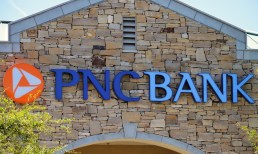There are guideposts along the way to open banking readiness. To that end, the Euro Banking Association’s (EBA) Open Banking Working Group said on Monday (June 28) that it has debuted a report that puts forth an operating model that can help guide financial institutions (FIs) on their path to digital readiness.
The report is titled “Ready or Not? Gearing the Bank Operating Model Toward Digital and Open Banking Readiness.” As a Monday release notes, the report tackles the requirements that are tied to navigating open banking on an operating basis.
“Digitalization has shifted customer behavior, disrupted value chains, brought on new competition and increased available data. Many banks have already started the transformation of their operating models to be ready for the digital environment – and they consider open banking as a critical element in this transformation,” Vincent Brennan, payments and operational resilience advisor and former deputy chairman of the EBA Board, said in an announcement tied to the report’s release.
A fact sheet related to the report, also released on Monday (June 28), notes some of the key characteristics of digital readiness: consistently focusing on customers, understanding the value of data, moving to open up the ecosystem to leverage opportunities, and acting agilely with speed in response to changes in the firm’s environment.
Focusing on the customer means embedding products and services at a “point of relevance” for the consumer. Being data-driven means expanding the availability of data with the consumption of external data sources. Openness, the association said in its analysis, fosters interaction with third parties and ecosystems. And technology enablement is tied to supporting application programming interface (API) infrastructure.
Embedding Open Banking
Advertisement: Scroll to Continue
“Successfully engaging in open banking requires embedding open banking activities in the bank’s daily operations,” the association said, which means there will be shorter times to market for new propositions.
The move toward open banking, as noted in this space, will have ripple effects across merchants, with the end result of accelerating eCommerce. Open banking will strengthen user authentication and foster the adoption of bank-to-bank payments.
In an example of how the initiative is gaining ground in Europe, the volume of API calls using the technology in the U.K. rose from 66.8 million in 2018 to six billion in 2020. More open banking payments were processed in the U.K. in just the month of February 2021 than in all of 2019.
“Today, open banking is powering some of the world’s leading eCommerce sites and apps, providing consumers with seamless payment options that significantly reduce the risk of payments fraud (no credit or debit card details are saved with the merchant), while enabling them to purchase with a few clicks and receive refunds when needed just as easily,” according to the report titled “Open eCommerce: Open Banking as the New eCommerce Accelerator in the U.K. and Europe,” a collaboration between PYMNTS and TrueLayer.
Read More On Open Banking:




